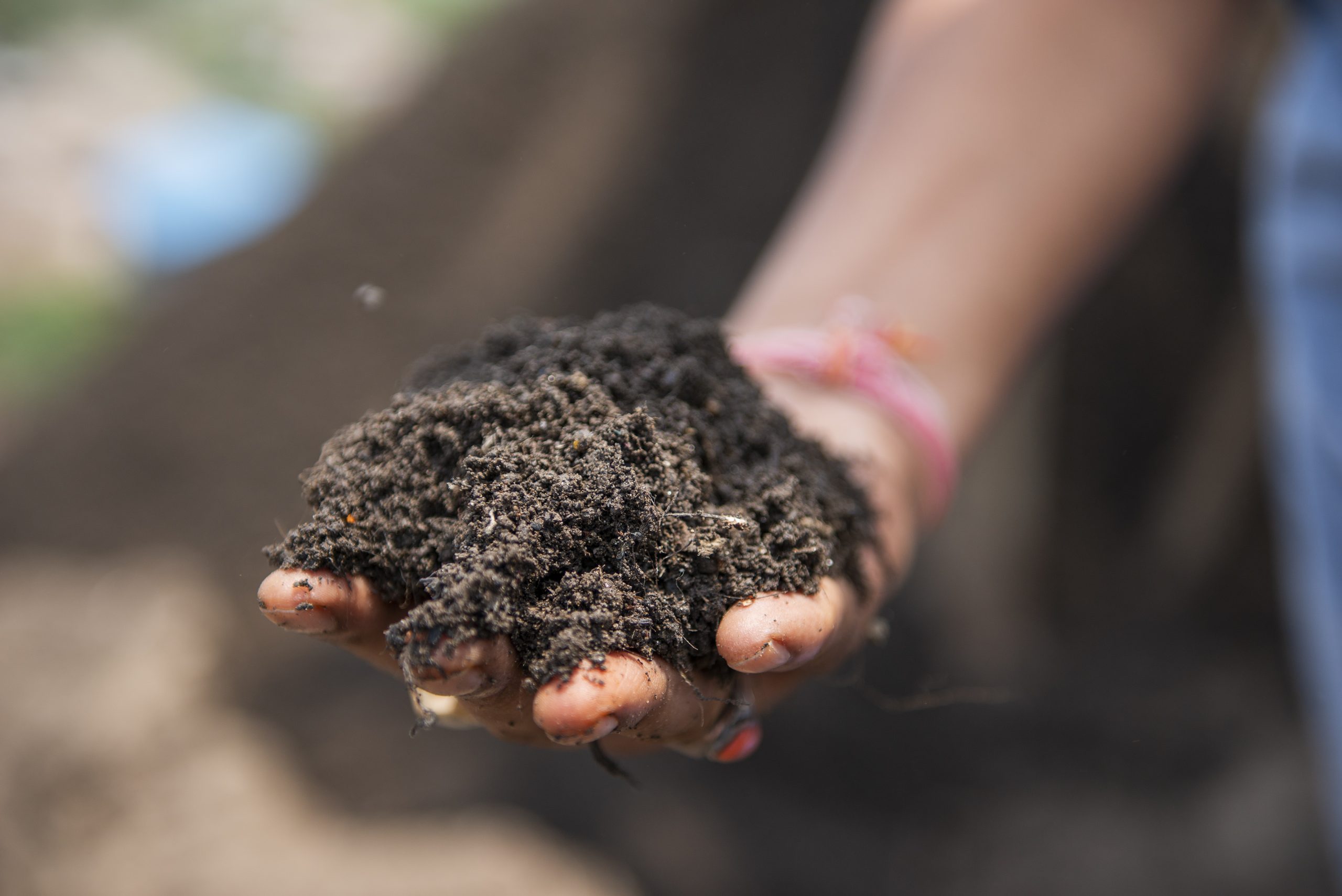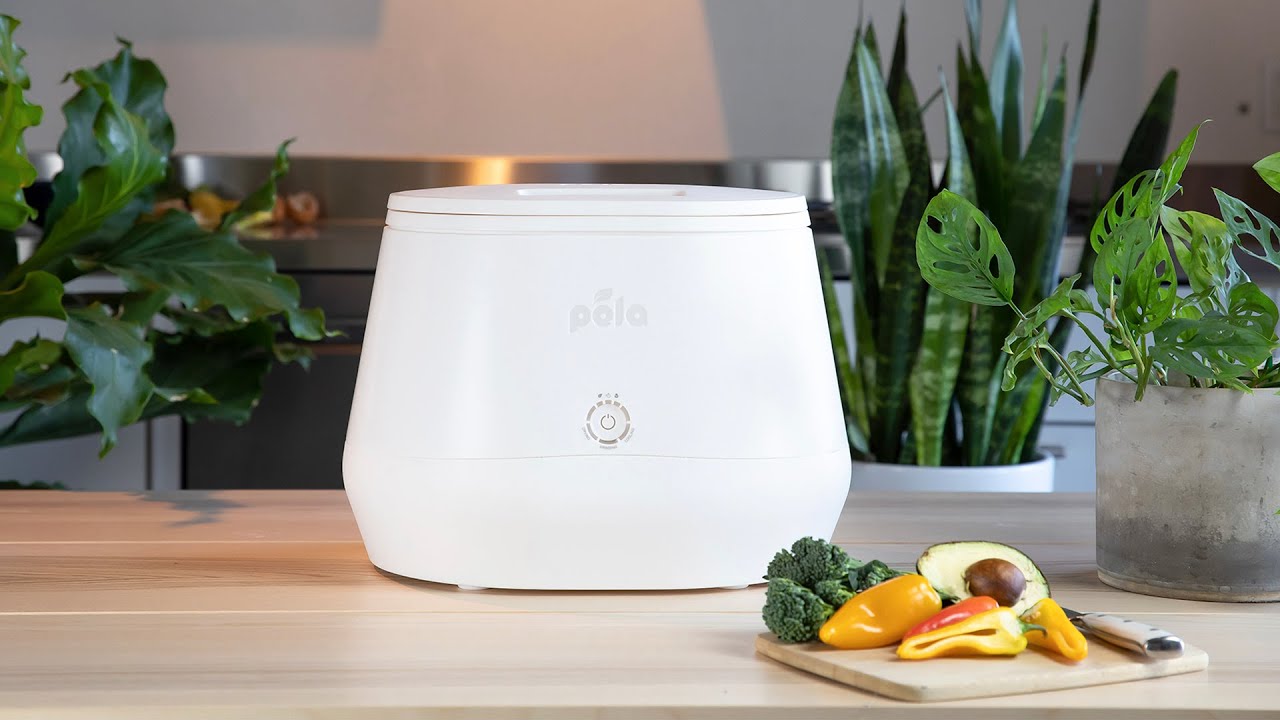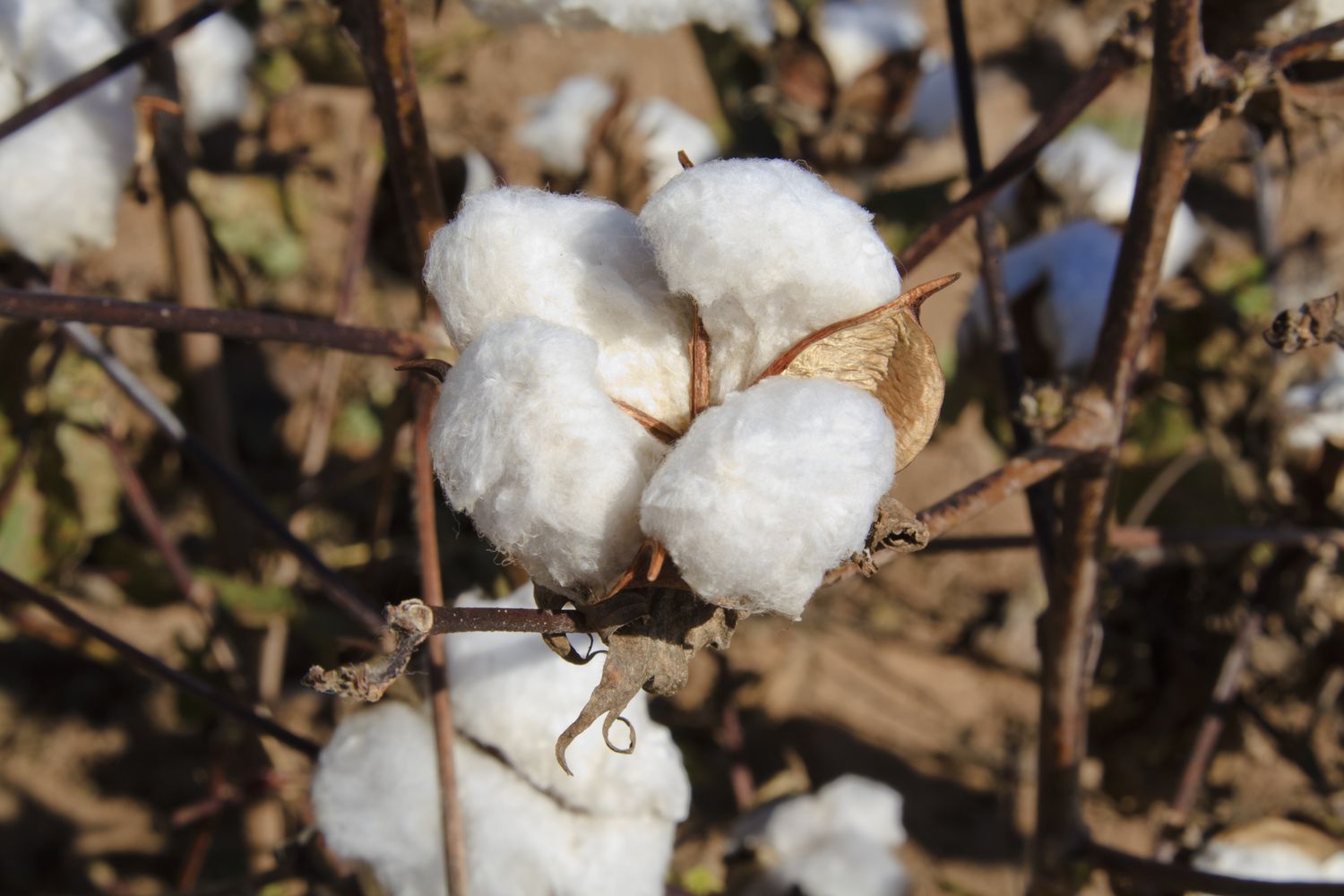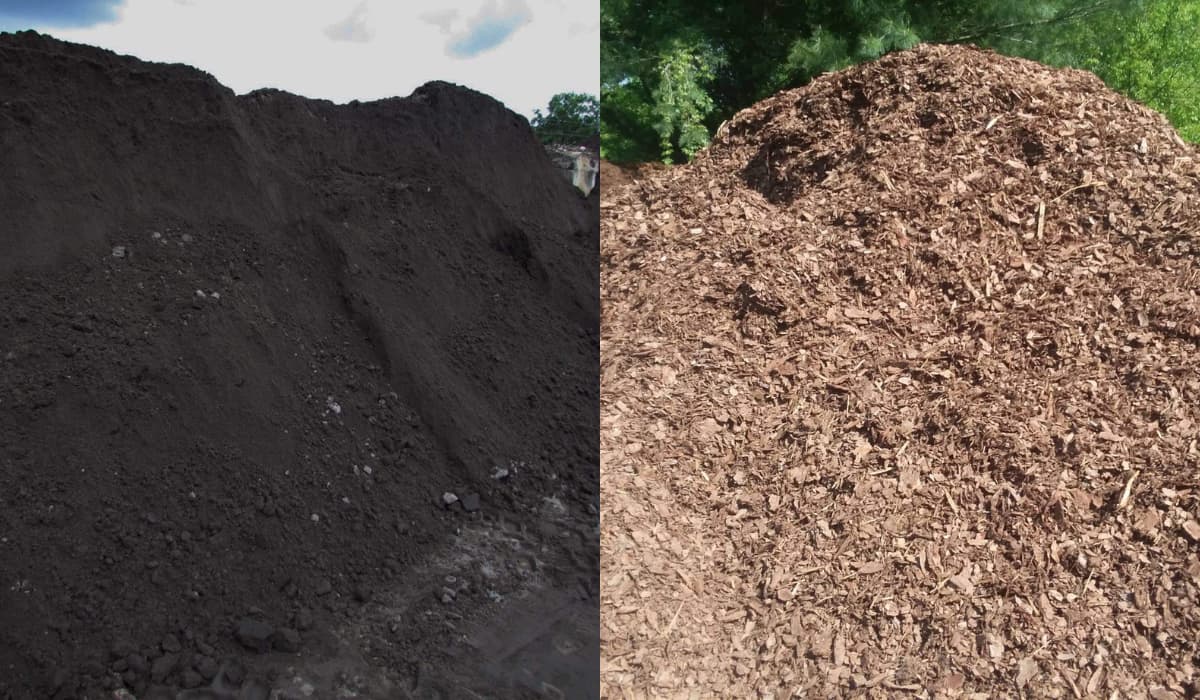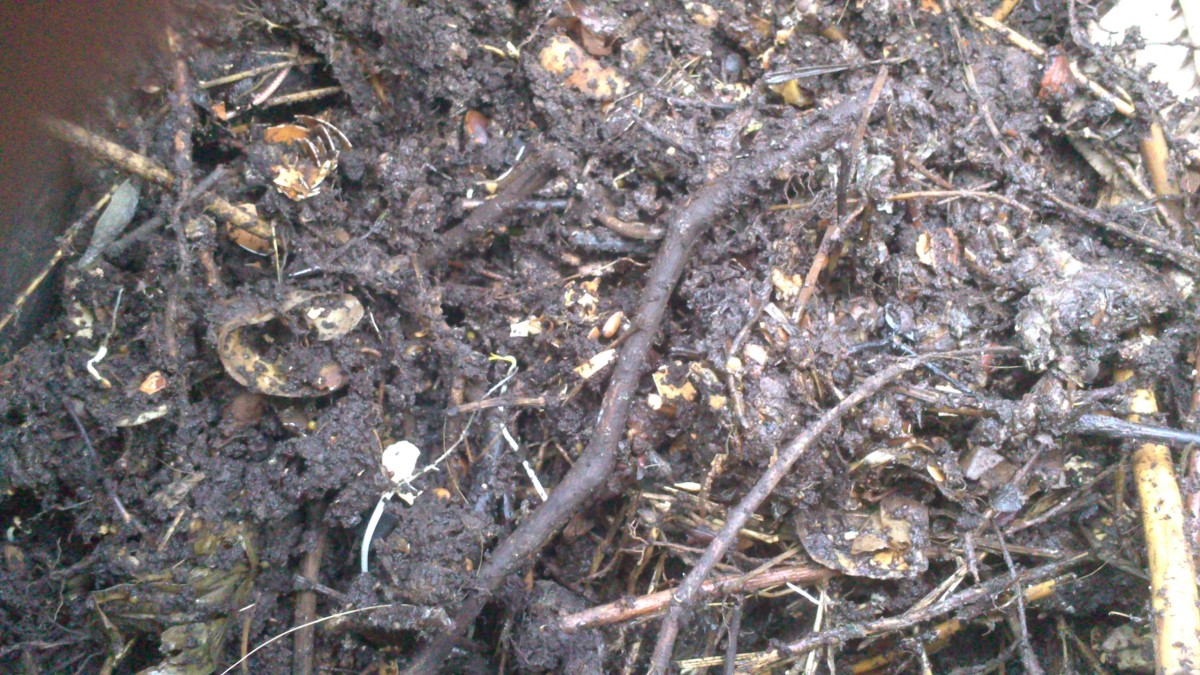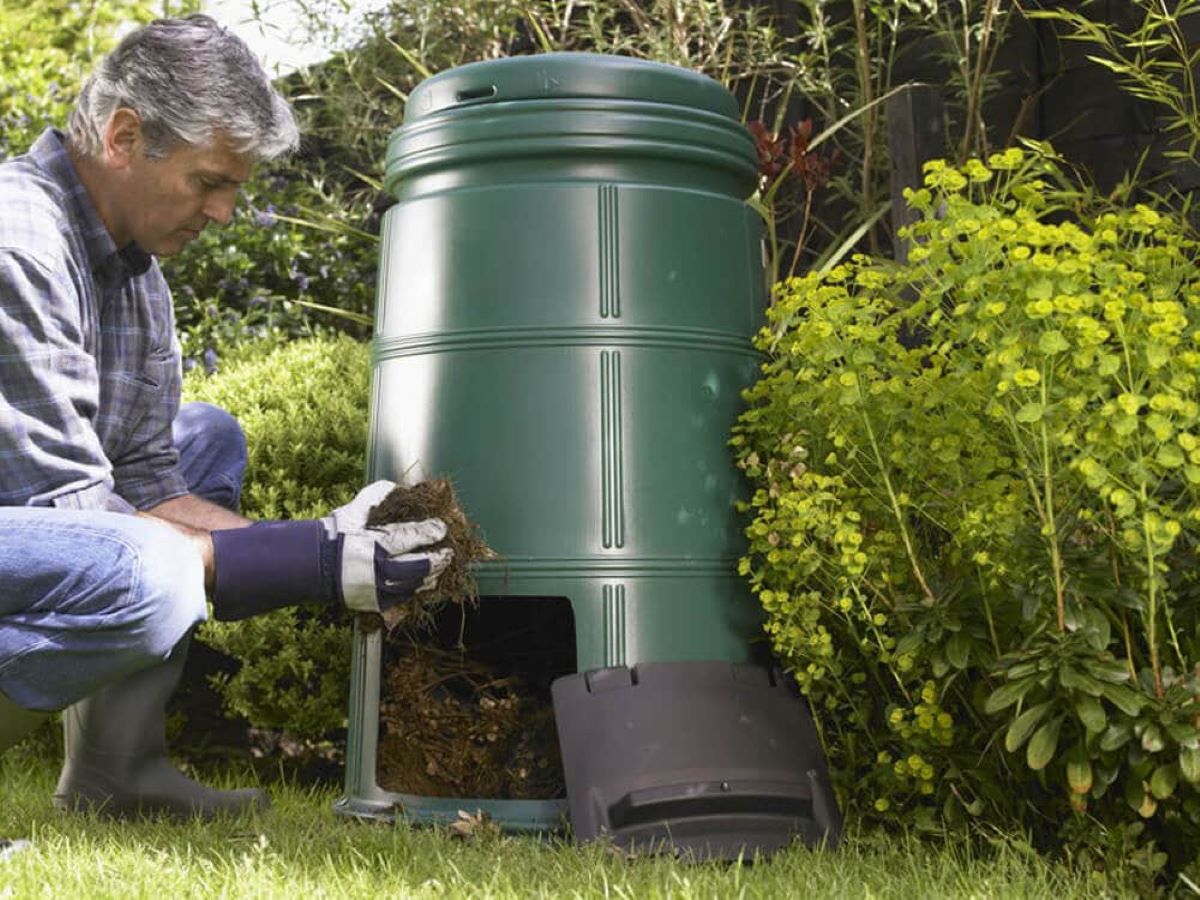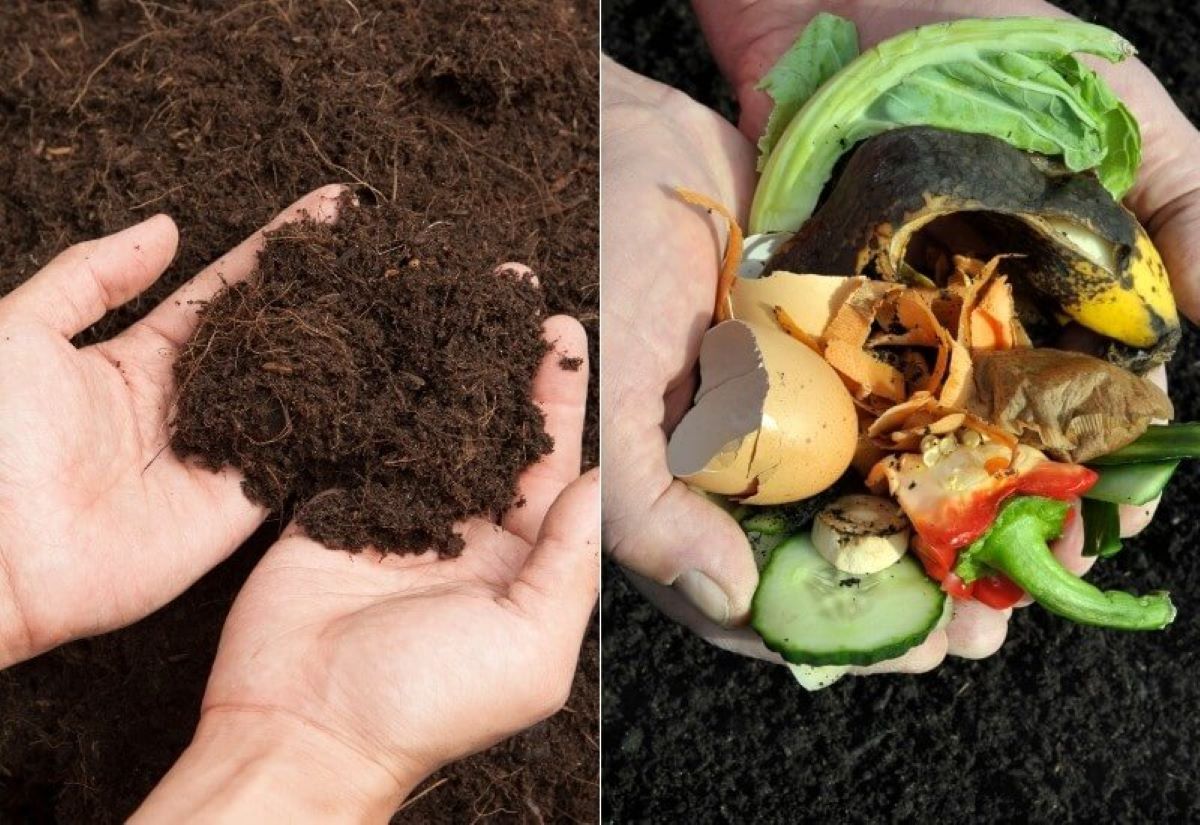Home>Gardening Basics>What Is In Compost


Gardening Basics
What Is In Compost
Modified: February 8, 2024
Learn how to get started with composting and discover what materials are commonly found in compost. Create nutrient-rich soil for your garden.
(Many of the links in this article redirect to a specific reviewed product. Your purchase of these products through affiliate links helps to generate commission for Chicagolandgardening.com, at no extra cost. Learn more)
Table of Contents
Introduction
Welcome to the world of composting! Whether you’re a seasoned gardener or just starting to develop your green thumb, understanding the ins and outs of composting is key to achieving a thriving, sustainable garden. Composting is a natural process that transforms organic waste materials into a nutrient-rich soil amendment known as compost. By harnessing the power of decomposition, composting not only reduces waste but also enriches the soil, promotes plant growth, and helps to preserve our environment.
Compost is often referred to as “black gold” for gardeners due to its numerous benefits. It provides essential nutrients for plants, improves soil structure, enhances water retention capacity, and helps to suppress plant diseases. Moreover, composting offers an eco-friendly approach to managing waste and reducing landfill contributions.
In this article, we will delve into the world of composting, exploring the various types of composting methods, materials suitable for composting, the composting process, factors that influence composting, common misconceptions, and the diverse uses of compost. By the end, you’ll have a comprehensive understanding of composting and be inspired to start your own composting journey.
Definition of Compost
Compost can be defined as the result of the decomposition of organic materials, such as kitchen scraps, yard waste, and manure, under controlled conditions. It is a dark, crumbly substance that is rich in nutrients and beneficial microorganisms, making it a valuable soil amendment for gardening and agriculture.
The process of composting involves breaking down organic waste through the action of bacteria, fungi, and other microorganisms. These organisms feed on the organic matter, releasing enzymes that break it down into simpler compounds. As the decomposition progresses, heat is generated, which kills off weed seeds and harmful pathogens, resulting in a safe and nutrient-rich end product.
Compost is often referred to as humus, which is the stable, dark organic component of soil. It is distinct from other soil amendments, such as mulch or fertilizer, because of its organic origin and its ability to improve soil structure and fertility over the long term.
Compost is a versatile substance that can be used in various applications. In gardening, it can be mixed into the soil before planting to improve its structure, water-holding capacity, and nutrient content. It can also be used as a top dressing around existing plants to provide a slow-release source of nutrients. Compost can even be used as a component in potting mixes or as a mulch to maintain soil moisture and suppress weed growth.
Overall, compost is a valuable resource for gardeners and farmers alike. It helps to enrich the soil, promote plant growth, and reduce the need for synthetic fertilizers and pesticides. By utilizing compost, we can create healthier, more sustainable ecosystems and contribute to the overall well-being of our planet.
Benefits of Composting
Composting offers a plethora of benefits for both the environment and gardeners. By diverting organic waste from landfills and harnessing the power of decomposition, composting contributes to a more sustainable and eco-friendly way of managing waste. Here are some key benefits of composting:
- Reduces waste: Composting allows us to divert a significant amount of organic waste from landfills, where it would otherwise decompose and release harmful greenhouse gases. By composting, we can play our part in reducing waste and minimizing our carbon footprint.
- Enriches soil: Compost is a nutrient-rich soil amendment that adds valuable organic matter to the soil. It improves soil structure, enhances drainage, and increases its ability to hold water and nutrients. The presence of compost also promotes beneficial microbial activity in the soil, which aids in nutrient uptake by plants.
- Reduces the need for synthetic fertilizers: The nutrients present in compost, such as nitrogen, phosphorus, and potassium, are released slowly over time, providing a sustainable source of nourishment for plants. By using compost, gardeners can reduce their reliance on chemical fertilizers, which can be harmful to the environment and waterways.
- Suppresses plant diseases: Compost contains beneficial microorganisms that help to suppress plant diseases and ward off harmful pathogens. These microorganisms create an environment that is unfavorable for disease-causing organisms to thrive, resulting in healthier plants.
- Improves water retention: Compost enhances the soil’s ability to hold water, reducing the need for frequent watering. It helps prevent water runoff and erosion, ensuring that plants have access to adequate moisture.
- Enhances biodiversity: Composting promotes the growth and proliferation of beneficial soil organisms, such as earthworms and beneficial bacteria. These organisms contribute to the overall health and biodiversity of the soil ecosystem.
- Preserves the environment: By reducing waste, improving soil health, and minimizing the use of synthetic fertilizers and pesticides, composting contributes to the preservation of our environment. It helps combat climate change, protects water quality, and promotes sustainable agriculture.
Overall, composting is a win-win solution. It not only reduces waste and supports environmental conservation but also provides gardeners with a cost-effective and sustainable method of improving their soil and growing healthier plants.
Types of Material Suitable for Composting
Composting relies on a careful balance of organic materials to create the optimal environment for decomposition. While many types of organic waste can be composted, it’s important to know which materials are suitable to ensure a successful composting process. Here are some common materials that are ideal for composting:
- Food Waste: Fruit and vegetable scraps, coffee grounds, tea leaves, eggshells, and nutshells are excellent sources of organic material for composting. Avoid composting meat, dairy products, and oily foods as they can attract pests and slow down the decomposition process.
- Yard Waste: Leaves, grass clippings, small prunings, and plant trimmings are valuable additions to the compost pile. These materials are rich in carbon and nitrogen, which are essential for the breakdown of organic matter. However, avoid using weeds that have gone to seed or invasive plants, as they could potentially spread in your garden when you apply the compost.
- Manure: Manure from herbivorous animals, such as horses, cows, or chickens, is an excellent source of nitrogen-rich material for composting. However, it’s important to let the manure age and decompose for at least six months before adding it to your compost pile to avoid potential contamination with harmful pathogens.
- Straw and Hay: These materials are high in carbon and help create a good balance between carbon-rich and nitrogen-rich materials in the compost pile. However, ensure that the straw or hay are free from pesticides or herbicides, as these chemicals can affect the quality of the compost.
- Shredded Paper and Cardboard: Waste paper, cardboard, and newspaper can be shredded and added to the compost pile. These materials provide carbon and help to improve the structure of the compost by preventing it from becoming too compacted.
- Wood Ash: Wood ash from fireplaces or wood-burning stoves can be sprinkled in small amounts into the compost pile. It contains potassium and trace minerals that can enrich the compost.
- Green Manure: Cover crops, such as clover, vetch, or buckwheat, grown specifically to be incorporated into the soil, can be chopped and added as green manure to the compost pile. They add organic matter and help improve soil fertility.
It’s important to maintain the right balance of carbon-rich (browns) and nitrogen-rich (greens) materials in your compost pile. Aim for a ratio of approximately 3 parts browns to 1 part greens to create an optimal environment for decomposition.
Remember to chop or shred larger materials like branches or leaves to speed up the composting process. Avoid adding materials that may contain toxins or chemicals, such as treated wood or heavily printed papers.
By utilizing these suitable materials, you can create a diverse and nutrient-rich compost that will contribute to the health and vitality of your garden.
Composting Process
The composting process is a natural and gradual decomposition of organic materials into nutrient-rich compost. While it may seem complex, understanding the basic steps of composting can help you effectively manage your compost pile and achieve optimal results. Here are the key stages involved in the composting process:
- Collection of Organic Waste: Start by collecting organic waste materials suitable for composting, such as kitchen scraps, yard trimmings, and plant debris. Avoid using animal products, oily foods, or materials treated with pesticides.
- Preparing the Compost Pile: Choose an appropriate location for your compost pile or bin. It should be well-drained to prevent waterlogging and easily accessible for regular turning and monitoring. Layer the materials in your compost pile, starting with a 6-inch layer of brown materials (such as dry leaves or shredded paper), followed by a 2-3 inch layer of green materials (like kitchen scraps or fresh grass clippings).
- Moisture and Aeration: The compost pile needs to be kept moist but not soggy. Aim for a moisture level similar to a squeezed sponge. Regularly check the moisture content and add water if it feels dry. Additionally, ensure proper aeration by regularly turning the pile with a pitchfork or compost aerator. This helps to introduce oxygen and prevent the materials from compacting.
- Temperature and Decomposition: As microorganisms break down the organic materials, heat is generated within the compost pile. This heat helps to kill off weed seeds and pathogens. The ideal temperature range for composting is between 130-160°F (55-71°C). Regularly monitor the temperature using a compost thermometer to ensure the process is progressing effectively.
- Turning and Layering: Every few weeks, turn the compost pile with a garden fork or compost tumbler to ensure even decomposition and to mix the materials. This helps to aerate the pile, distributes moisture, and accelerates the composting process. Composting can take anywhere from a few months to a year, depending on various factors such as temperature, moisture levels, and the types of materials being composted.
- Maturation Phase: After the initial composting period, allow the compost to mature by letting it rest for several weeks. At this stage, the compost will continue to break down and stabilize, resulting in a dark, crumbly substance that resembles rich soil.
- Screening (optional): If desired, you can screen the mature compost to remove any larger materials that haven’t fully decomposed. This will result in a finer, more consistent product that is easier to incorporate into the soil.
Throughout the composting process, it’s important to monitor the moisture levels, temperature, and turning frequency to ensure proper decomposition. Patience and regular maintenance are key to successfully harnessing the power of composting and producing nutrient-rich compost for your garden.
Factors That Influence Composting
Composting is influenced by a range of factors that can affect the speed and effectiveness of the decomposition process. By understanding these factors, you can make adjustments to your composting practices to ensure optimal conditions for efficient composting. Here are some key factors that influence composting:
- Carbon-to-Nitrogen Ratio: The ratio of carbon-rich (browns) to nitrogen-rich (greens) materials in the compost pile is crucial. Aim for a balanced ratio of approximately 30 parts carbon to 1 part nitrogen. Too much carbon can slow down decomposition, while too much nitrogen can result in a smelly and slimy compost pile. Adjust the materials accordingly to maintain the right balance.
- Particle Size: The size of compost materials can impact the rate of decomposition. Smaller particles, obtained by shredding or chopping, provide a larger surface area for microbial activity and decomposition. As a result, smaller materials break down more quickly than larger ones.
- Moisture Levels: Adequate moisture is essential for composting. The compost pile should be moist, like a squeezed sponge, to support microbial activity. Too much moisture can lead to anaerobic conditions and a foul smell, while insufficient moisture can hinder decomposition. Regularly monitor and adjust the moisture levels by adding water or dry materials as needed.
- Aeration: Oxygen is vital for the survival and activity of aerobic microorganisms, which are responsible for efficient composting. Ensure proper aeration by turning the compost pile regularly. Turning the pile introduces fresh oxygen, prevents compaction, and helps distribute heat and moisture throughout the pile.
- Temperature: Composting is most effective within a temperature range of 130-160°F (55-71°C). Higher temperatures accelerate decomposition, kill pathogens and weed seeds, and produce faster results. However, extreme temperatures can also harm beneficial microorganisms. Monitor the temperature regularly using a compost thermometer to ensure it remains within the ideal range.
- Materials: The types of organic materials used in composting can impact the decomposition process. Some materials, such as woody materials or leaves with a high carbon content, may take longer to break down. Mixing a variety of materials, including greens and browns, ensures a diverse nutrient content and helps maintain a balanced compost pile.
- Pile Size: The size of the compost pile can influence the rate of decomposition. A larger pile generates more heat and retains moisture, which promotes faster decomposition. However, larger piles may be more challenging to turn and manage. Aim for a pile that is at least 3 feet in height and width for efficient composting.
- Time: Composting is a natural process that requires time. The duration of composting can vary depending on various factors, including the materials used and the management practices employed. Patience is key, and regular monitoring and maintenance will yield the best results.
Understanding and managing these factors can help you maintain optimal conditions for composting and achieve a high-quality compost for your garden. Experimenting with different materials and techniques can further fine-tune your composting process.
Common Misconceptions About Compost
Composting is a popular practice embraced by gardeners and environmental enthusiasts alike. However, there are several misconceptions and myths surrounding compost that can lead to confusion and misinformation. Let’s address some of the common misconceptions about composting:
- Compost attracts pests: While it’s true that decomposing organic matter can sometimes attract flies or other insects, properly managed compost piles are unlikely to cause an infestation. To prevent pests, ensure that your compost pile is well-balanced, with a proper ratio of carbon-rich and nitrogen-rich materials. Avoid adding meat, dairy, or oily foods that can attract unwanted critters.
- Compost smells bad: When managed correctly, compost should not emit a foul odor. Foul smells often indicate an imbalance in the compost pile, such as an excess of nitrogen-rich materials or insufficient aeration. Ensure proper turning and aeration, and consider adding dry brown materials or adjusting the nitrogen-to-carbon ratio to address any unpleasant odors.
- Compost is difficult to make: Composting can be as simple or as complex as you make it. While there are various composting methods available, even basic techniques, such as a traditional compost pile or bin, can yield successful results. With the right balance of organic materials, moisture, and regular maintenance, composting can be a straightforward and rewarding process.
- Compost needs to be turned every day: While frequent turning can accelerate the decomposition process, it is not necessary to turn your compost pile every day. Turning every few weeks is often sufficient to introduce fresh oxygen, distribute moisture, and facilitate decomposition. Find a turning frequency that suits your compost pile and follow that schedule consistently.
- Compost is the same as fertilizer: While compost can provide nutrients to plants, it is different from traditional fertilizers. Compost is a soil amendment that enhances soil structure, improves moisture retention, and promotes beneficial microbial activity. Fertilizers, on the other hand, are specifically formulated to provide certain nutrients to plants. Compost is often a more sustainable and long-term solution for overall soil health.
- Compost takes a long time to produce: While it is true that composting is not an instantaneous process, it does not have to take an exorbitant amount of time. With proper management and ideal conditions, composting can take as little as a few months. However, the timeline can vary depending on factors such as the materials used, temperature, moisture, and the size of the compost pile. Patience and regular maintenance will yield high-quality compost in due time.
Understanding these misconceptions can help alleviate any concerns or misunderstandings about composting. By debunking these myths, we can embrace composting as a valuable and accessible practice that contributes to sustainable gardening and environmental stewardship.
Uses of Compost
Compost is a versatile and valuable resource that can be utilized in numerous ways to benefit your garden, plants, and the environment. Let’s explore some of the common uses of compost:
- Soil Amendment: Compost is an excellent soil amendment that enriches the soil with organic matter and essential nutrients. By incorporating compost into your garden beds or containers, you improve soil structure, enhance water retention, and promote the growth of beneficial microorganisms. The addition of compost also increases the nutrient-holding capacity of the soil, improving overall plant health and vigor.
- Planting Mix: Compost can be blended with other materials, such as peat moss or vermiculite, to create a nutrient-rich planting mix for your indoor or outdoor plants. The addition of compost improves the texture and fertility of the mix, providing a strong foundation for healthy plant growth.
- Top Dressing: Apply a layer of compost around the base of established plants to act as a slow-release fertilizer. This top dressing provides a consistent source of nutrients and helps suppress weeds. It also improves soil structure and enhances moisture retention, reducing the need for frequent watering.
- Potting Mix Component: Incorporate compost into your homemade or store-bought potting mix to boost its nutrient content. The addition of compost improves the water-holding capacity of the mix, ensures adequate drainage, and provides a source of organic matter and beneficial microbes for potted plants.
- Lawn Care: Use compost to improve the health and appearance of your lawn. Spread a thin layer of compost over the lawn surface and rake it in to deliver nutrients directly to the grass roots. The organic matter in the compost improves soil fertility, encourages deeper root growth, and enhances water infiltration.
- Seed Starting: Mix compost with potting soil to create a nutrient-rich medium for starting seeds. The compost provides the necessary nutrients for seedling growth and helps retain moisture, promoting successful germination and robust seedling development.
- Mulching: Spread a layer of compost around your plants as a mulch to help suppress weeds, conserve soil moisture, and regulate soil temperature. The continuous decomposition of the compost creates a beneficial environment for soil organisms, which further enhance nutrient availability and plant health.
- Erosion Control: Use compost to help prevent soil erosion on slopes or areas prone to erosion. The organic matter in the compost binds the soil particles together, improving soil stability and reducing the risk of erosion caused by heavy rain or strong winds.
These are just a few of the many uses of compost. The versatility of compost makes it a valuable tool for gardeners, farmers, and landscapers seeking to improve soil health, conserve water, reduce the need for synthetic fertilizers, and create sustainable and thriving ecosystems.
Conclusion
Composting is a rewarding and sustainable practice that offers numerous benefits for both the environment and gardeners. By harnessing the natural process of decomposition, we can transform organic waste into nutrient-rich compost, which enhances soil structure, promotes plant growth, and reduces waste. Throughout this article, we explored the definition of composting, the benefits it provides, the types of materials suitable for composting, the composting process, factors that influence composting, common misconceptions, and the various uses of compost.
Composting not only reduces our environmental impact by diverting organic waste from landfills but also improves soil health and fertility. The resulting compost acts as a natural soil conditioner, enriching the soil with organic matter, nutrients, and beneficial microorganisms. It enhances water retention, suppresses plant diseases, promotes biodiversity, and reduces the need for synthetic fertilizers and pesticides.
While composting may involve some trial and error, understanding the key components and best practices can help you successfully manage your compost pile or bin. Remember to maintain the balance of carbon-rich and nitrogen-rich materials, provide adequate moisture and aeration, and monitor the temperature and turning frequency to ensure optimal conditions for decomposition.
By embracing composting, we contribute to a more sustainable future, one where we reduce waste, conserve resources, and promote healthier ecosystems. Whether you’re an experienced gardener or just starting out, consider incorporating composting into your gardening routine. Not only will you reap the benefits in the form of healthier plants and stronger soil, but you will also play a role in preserving our environment for generations to come.
